After years of quiet development, Half-Life: Alyx is finally here. With hype on all sides—as Valve’s first full-fledged VR game and the first Half-Life game in more than a decade—does it deliver? Read on to find out in our full Half-Life: Alyx review.
Half-Life: Alyx Details:
Developer: Valve Software
Available On: Steam (Index, Vive, Rift, Windows VR)
Reviewed On: Index, Vive Pro, Rift S, Rift CV1
Release Date: March 23rd, 2020
Price: $60
Gameplay
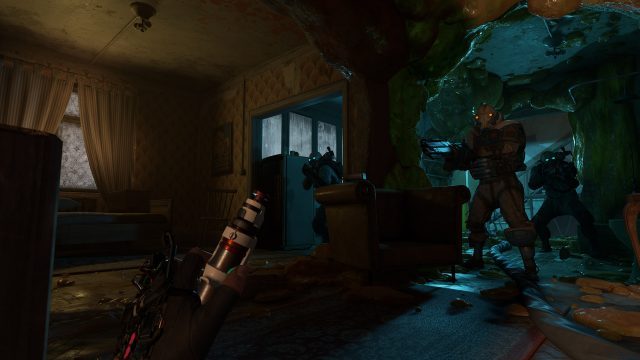
While VR game design is very different from flat-screen game design, Valve has done an excellent job in Half-Life: Alyx of keeping the essence of what makes a Half-Life game. Though the pace is slower and more thoughtful, those who have played the prior titles will feel themselves thrust into the Half-Life universe more deeply than ever before.
Gameplay in Half-Life: Alyx is split between exploration, puzzle solving, and combat. Combat is less of a run-and-gun affair than the prior games, and while you’ll be confronted with fewer enemies, individual enemies are more threatening and combat takes on a decidedly more personal tone.
Although the game is effectively linear, there’s so much visual and interactive detail in the environment around you that Half-Life: Alyx still fosters a sense of exploration. As you explore you’ll want to keep your eyes out for the game’s scarce resources like ammo, health, grenades, and especially ‘Resin’ (small chunks of material used for upgrading weapons). Where other VR titles sometimes make resource collection feel tedious, the thoughtful placement (and even occasional mini-puzzles) make finding resources in Half-Life: Alyx feel truly rewarding.
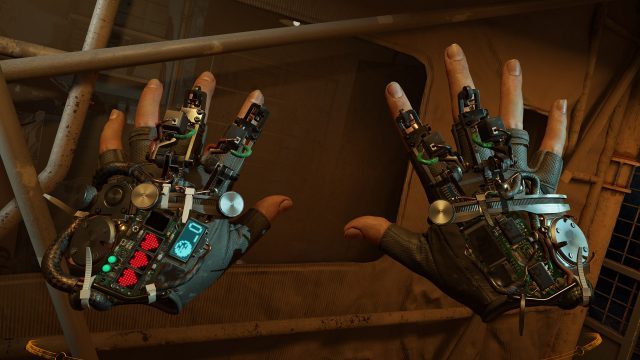
This is aided in a huge way by the Gravity Gloves, which let you grab objects from a distance rather than needing to walk within arm’s reach of each thing you want to pick up. To use the Gravity Gloves, you’ll need to first ‘tether’ an object and then do a ‘pulling’ gesture to initiate a force pull. When you do, the object launches in a satisfying arc right toward your hand to be caught.
This might seem like a subtle tweak to existing ‘force pull’ mechanics in other VR games, but in practice it’s engaging, fun, and almost makes you feel like you have a telekinetic superpower. The targeting system and initiation gesture also work together to greatly minimize the number of accidental force pulls compared to what I’ve seen in many other VR games. The system is so successful that I expect to see this approach to force pull used in many future VR titles.

One of the things you’ll often be collecting thanks to your Gravity Glove powers is Resin for upgrading your guns. Resin is not in ample supply, so diligent explorers who manage to find most of it along their way will be able to upgrade their weapons sooner than others. Upgrades feel meaningful and can only be done at upgrade stations which are occasionally found throughout the game.
While the weapons in Half-Life: Alyx are satisfying in both their interactions and firing, unfortunately there’s not many to speak of. Instead of picking up guns wherever, you’ll only get access to three weapons throughout the game which are bound to you. There’s the pistol, shotgun, and a Combine pulse rifle. Worse, as you upgrade the Pistol and pulse rifle, they overlap (instead of diverge) in their combat roles, making them less unique over time.
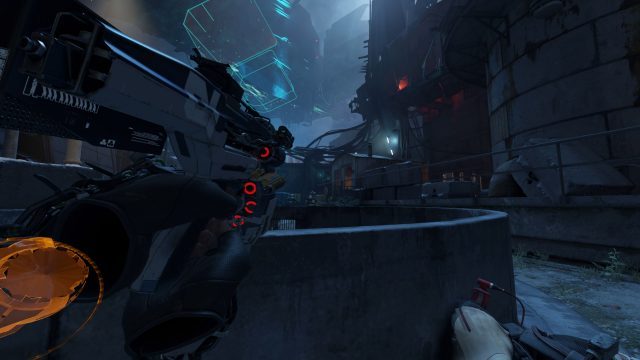
I was disappointed to not see a wider variety of Half-Life’s unique weapons represented in the game, especially when there are opportunities abound for VR-specific interactions. In particular, I often found myself wanting a precision long-range option in Half-Life: Alyx. The iconic Half-Life crossbow would have been an awesome fit, not only for its interactive affordances (loading and heating the rebar bolt) but also for the experience of pinning enemies to walls (and being able to see that up close in VR). With Valve planning to release a full range of modding tools, I hope that the modding community will be able to help out with this in time.
The tight weapon set seems partly the result of Valve’s choice to largely avoid linked two-handed interactions. While operating your weapons does require two hands, there’s no weapons in the game that are held with both hands, and very few moments in the game involve two-handed interactions.
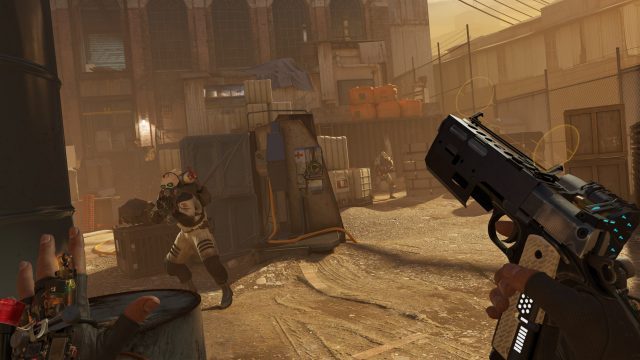
The game’s small arsenal also impacts it in other ways. While in Half-Life 2 it felt like a reward to discover the rarer ammo for the game’s unique guns (like rebar for the crossbow or orbs for the pulse rifle’s secondary fire), with less gun types there’s fewer things for Alyx to reward players with for their exploration. Resin is always a welcomed find, but it can be a bit of a let down to spot a hidden supply box and smash it open only to find a single pistol magazine or a health syringe inside.
Combat pacing starts quite slowly with headcrab zombies as the main threat in the first third of the game. It’s clear that Valve wanted to give players ample time to learn how to move, use their Gravity Gloves, and operate their weapons before introducing them to more dynamic enemies. Even so, the headcrab zombies can feel like a threat in close quarters, and Valve has no qualms about putting your combat training to the test by making sure you can reload in the dark…
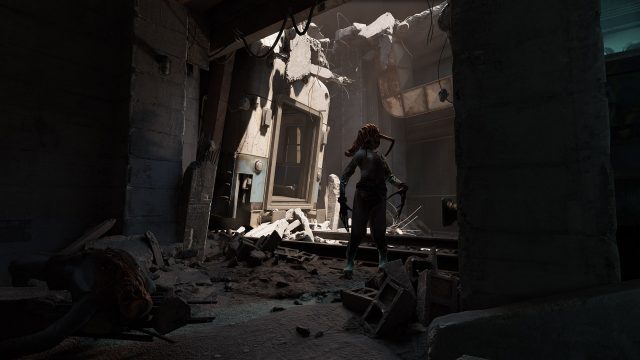
Later in the game you’ll face off against Combine soldiers which are distinctly more threatening. Even on Normal difficulty, combat is relatively unforgiving, and a single soldier won’t hesitate to take you down if you aren’t careful. You’ll absolutely want to find some cover and keep your head down when the bullets start flying your way.
Like weapons, enemy variety is minimal. Combine soldiers come roughly in three types of difficulty and don’t present particularly unique threats. Especially in the later stages of the game when your guns have seen some upgrades, killing Combine soldiers amounts to aiming your laser sight at their head and holding the trigger until they die. Getting up close and personal with the shotgun is riskier, but far more satisfying.
Though sporadic, there’s a few interesting standout enemies that add some intrigue, including a unique enemy that’s part of a masterful sequence that’s simply unmatched in execution elsewhere in VR. I don’t want to spoil this for you, so I’ll just say that I enjoyed my time with ‘Jeff’.

For me, Alyx’s larger puzzles felt like classic Half-Life fare and struck a good balance of challenge without tedium; I never felt completely stumped, but the game still managed to make me feel clever after figuring out the solution.
If you get stuck on the bigger puzzles, stepping back and assessing the situation is usually enough for a clue to reveal itself. Even the smaller ‘hacking’ puzzles—which open things like doors, supply bins, or upgrade stations—manage to stay interesting thanks to gently increasing complexity.
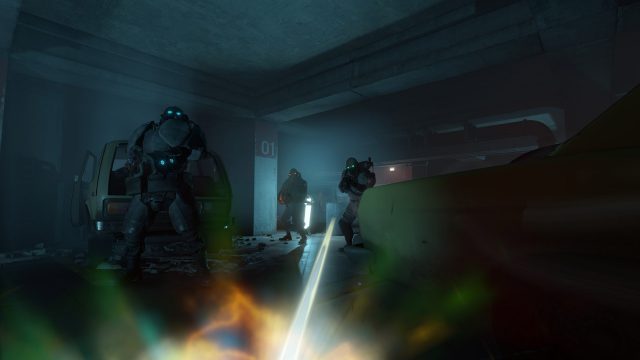
Though I wished the game offered a greater variety of weapons and enemies, the limited roster is part of a broader trend in Half-Life: Alyx which is all about keeping gameplay streamlined and fun. While the game doesn’t offer much in the way of mechanical innovation, what is there is polished to a sheen. Valve has managed to craft Alyx in way which avoids much of the clunk seen in many other VR titles, and I felt compelled to keep pushing forward throughout the 12 hours it took me to beat the campaign.
Immersion

From the first moment you find yourself standing in the menu screen, it’s clear that there’s a certain gravity to Half-Life: Alyx that you’ll be hard pressed to find anywhere else in VR; this is what it feels like to step into the struggle for City 17.
With heaps of environmental and interactive detail, Valve has crafted an incredibly immersive world. Aside from nearly every small object in the game being physically interactive, there’s just so much to look at. Collectively, Half-Life: Alyx is the most detailed VR game I’ve ever played. With consistently great art direction and impressively crisp anti-aliasing, the game’s visuals are top-notch.
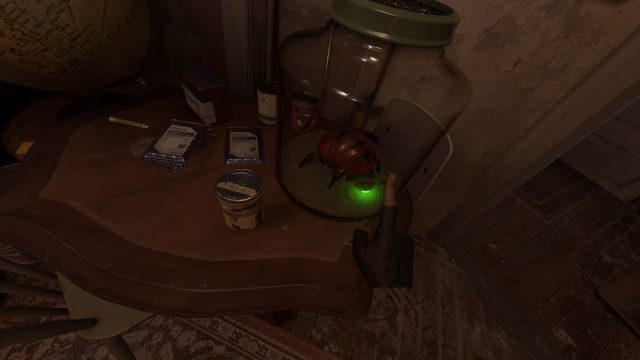
While Alyx impresses with interactive details like turnable sink faucets, flippable light-switches which actually turn on lights, and liftable toilet seats, there are a few immersion misses.
For one, there’s essentially no melee in the game at all. This is a bit jarring when many of the game’s enemies want to get right up into your face, and especially after Boneworks (2019) showed how useful it is just to be able to stagger enemies by shoving them back with your hands when they get too close.
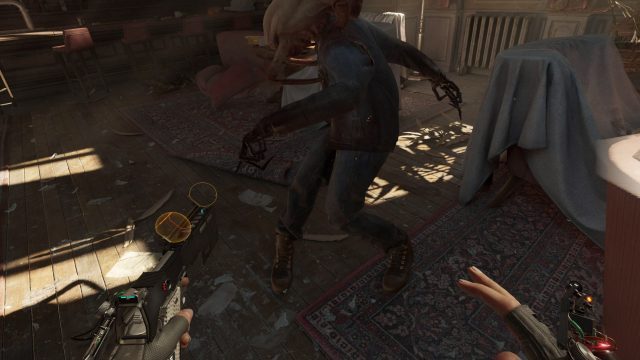
Another immersion issue I found is that equipping weapons is done with a gesture menu and, once equipped, the weapons stick to your pre-selected ‘weapon hand’ whether you are ‘gripping’ the weapon or not. This means that weapons can’t be passed between your hands, thrown, or anything else, making them feel decidedly less like part of the game’s otherwise quite physical world. And when you’re done fighting and want both your hands free to interact with the world, you need to use a button to ‘equip’ your hand; a decidedly non-immersive action.
While this design choice does cut out much of the VR clunk that can come from a fiddly holster system, Alyx feels a bit behind the times in this department after seeing smooth and compelling holster mechanics from the likes of Blood & Turth (2019) and Stormland (2019); the latter’s ‘magnetic holster’ system—which automatically re-attaches weapons to your holster if dropped—would have been a perfect thematic fit with the Gravity Gloves.
Much of Alyx’s rich immersion comes from its incredibly detailed world, including occasional side-paths that sometimes reveal optional scenes which reward your curiosity and flesh out the game world.
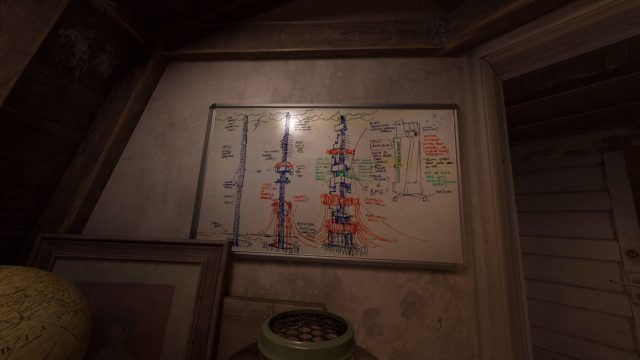
With hands that don’t clip through the environment and so many interactive objects scattered about, there’s a sense of solidity to the world which helps drive consistent immersion. At one point I was rummaging through a filing cabinet looking for resources; after pulling open the bottom-most drawer, I stood up and just about went to kick it shut with my foot… before remembering that the game isn’t actually tracking my feet.
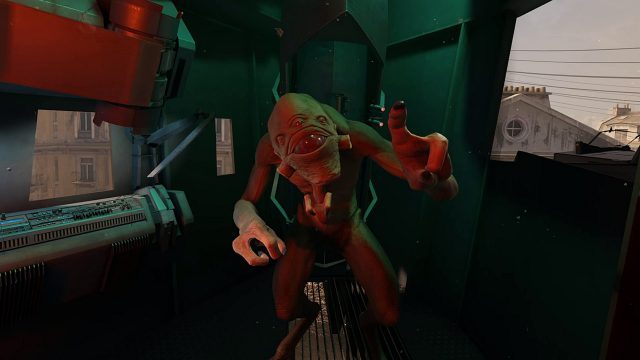
While Half-Life: Alyx’s story is engaging enough to justify the ongoing action, not all that much really happens beyond what’s necessary to keep you moving toward your goal. That’s not to say that Alyx isn’t consequential to the plot of Half-Life overall, though the way that it intersects with the plot of the other games in the franchise feels sudden, significant, and a bit clumsy. Avoiding spoilers; I’m not quite sure what the reaction of most players will be, but I think there’s likely to be a lot of discussion around this post-launch.
Comfort

Half-Life: Alyx supports teleportation, dashing, continuous locomotion, and a range of other comfort options like snap turn adjustments, ‘real’ ladder climbing, and whether or not you want barnacles to be able to actually lift you off the ground. Throughout my time playing Half-Life: Alyx I felt that the game did a great job of maintaining comfort.
Valve clearly spent time thinking about how Half-Life: Alyx should work with each of the VR controllers out there. While there’s some minor ways in which they don’t follow established input patterns that VR vets would be familiar with, they did a great job overall and no matter which controller you use, the game feels equally playable.
Alyx feels like it was first and foremost designed for standing play in room-scale playspaces with teleportation or dashing. Continuous locomotion works well, though the game doesn’t feature a real ‘jump’, and instead uses a ‘mantle’ (which sort of slides you up onto objects) or a teleport jump when you need to cross a gap. Sometimes the game asks you to teleport jump across large gaps that don’t look entirely jumpable at first glance, making for the occasional moment of confusion before you realize where to go.
Those with tight playspaces will likely feel cramped at times, as many of the game’s mechanics seem to want you to reach and lean quite a bit, especially the ‘power’ puzzles where you use Alyx’s multi-tool to scan for power lines in the walls.
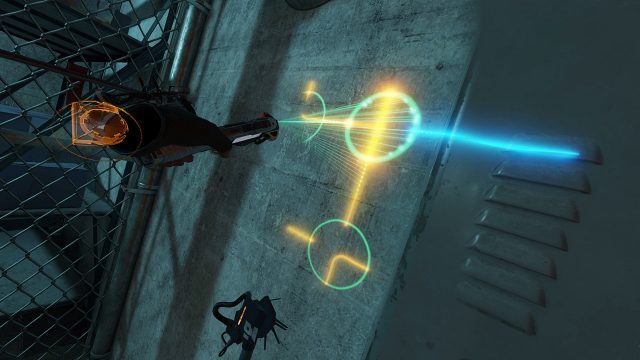
For the same reason (reaching and leaning), seated play doesn’t feel great, though it fares a bit better with continuous locomotion rather than teleportation. Granted, there’s an option in the game to allow you to adjust your height from seated up to a standing position or down to a crouching position. At the time of playing I wasn’t able to get these options to work correctly, though if I did I think I would have preferred to use the option to play most of the game at standing height (even while playing seated) considering how many of the game’s environmental interactions take place at shoulder-height. I’ve reached out to Valve for more guidance on the height adjustment controls.
I found one oddity with ladders—though I had the ‘real ladder climbing’ option enabled, the vast majority of ladders would automatically teleport me to the top or bottom if I misplaced my grab on a single rung. I found this more annoying than uncomfortable, as I had already indicated to the game that wanted to climb the ladders on my own.
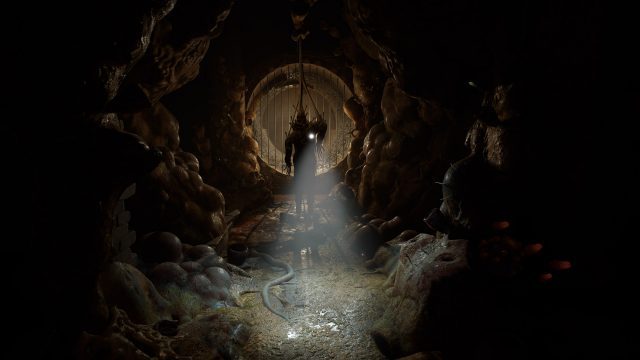
If you are especially claustrophobic or unable to handle immersive horror, Half-Life: Alyx could definitely be a challenge. Some of the scarrier sections of the game will plonk you down you in the dark with a flashlight as your only source of light, constraining the limited field of view of your headset even more.






